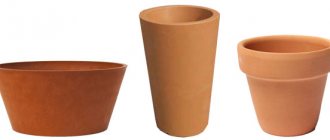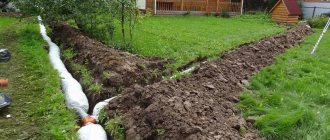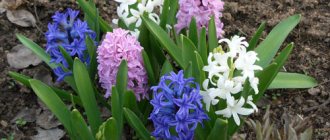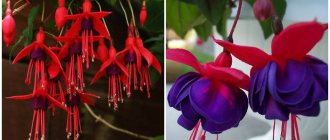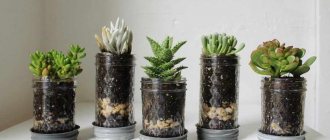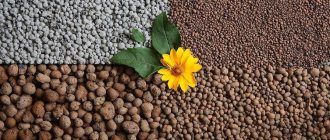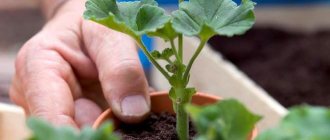Everyone, even the most inexperienced gardener, knows that when planting a houseplant in a container, drainage must be done. However, not everyone knows that installing a drainage layer in a bowl is not as simple as it seems at first glance. Why do indoor plants need drainage, what layer of drainage should be poured and what materials should be used? There really are a lot of questions. Let's try to figure it out and start from the very basics.
So, drainage for indoor plants is a system whose main function is to remove excess moisture. It includes both the flower pot itself, equipped with special holes in the bottom, and a special layer of water-permeable materials. In addition, the drainage system also includes soil that has water- and breathable properties.
Perhaps all lovers of indoor flora understand why drainage is needed. Under natural conditions, rainwater passes freely through the soil, nourishing plants, but without stagnating. The excess goes deep underground, forming groundwater. In addition, not only the above-ground part of the plant (trunk, branches, leaves), but also the underground (root system) must be supplied with air. And if in the natural environment there are no problems with this - oxygen and other necessary gases reach the roots with water and through the soil, then in home growing conditions the respiration of the root system is difficult.
The dense materials from which modern flower pots are made practically do not allow air to pass through. And where there is no air flow, the water begins to stagnate and turn sour, putrefactive processes occur, and pests multiply. All this ultimately leads to disease and death of the plant. That is why proper drainage is one of the most important steps when planting indoor flowers.
Is drainage really necessary? But what about those plants that grow in a humid environment (for example, cyperus) or those that, on the contrary, do not need frequent watering (cacti and succulents)? It's safe to say that all indoor plants need drainage, but the drainage system may vary. This depends both on the type of home flower and on the container in which it will be planted.
Operating principle of drainage
Drainage for flowers - what is it? Air absorption is very necessary, even more so than a regular watering regimen. Drainage for indoor plants must be capable of air exchange. This makes it possible for the roots and the entire plant to consume the necessary amount of air.
Large expanded clay for flowers (photo)
It acts as a whole system, provides air flow and is water permeable. It is very important to use drainage; it can be made from different materials in the form of large grains or fractions that do not enter into chemical reactions when moistened, will not collapse when interacting with moisture and will not rot.
Sphagnum moss
Many gardeners use pure sphagnum moss as a drainage material. This natural material holds moisture well, and when necessary, the water from it passes back into the soil. In addition, moss is endowed with healing and disinfecting qualities.
Moss grows on swampy or very wet forest soils. It can be seen in the form of soft stems of light green color, from which needle-like soft leaves stick out in all directions.
It can be harvested in any season, but it is preferable to do it in the fall, which will make it possible to preserve the material longer and better during transportation.
Before using drainage for flowers in the form of moss, fill it with warm water, up to 45 ° C, for half an hour. This is necessary both for saturation with moisture and for getting rid of clinging insects.
Moss should be stored in unsealed polyethylene to breathe in and in a cool place, possibly in the freezer. When defrosting, the material does not lose its quality.
The only disadvantage of this drainage is its inaccessibility, since it is not always on sale.
Materials for production
Typically, drainage is made from natural or similar materials:
- Pebbles;
- Crushed stone;
- Brick.
In a flower shop you can purchase specially designed drainage made from the following materials:
- Expanded clay;
- Vermiculite;
- Agroperlite.
Purchased drainage for a flower pot
They allow liquid to pass through well, protect flowers, and cleanse the soil of various harmful salts and toxins.
To choose the right material, you need to take into account your imagination. For many vegetation, the container is filled to less than half, such plants include:
- Saintpaulia;
- Streptocarpus;
- Anthurium.
Drainage for indoor flowers should be laid at a height of 3 cm. The listed types can be replaced with foam plastic. It will qualitatively protect the soil from hypothermia.
Expert opinion
Yulia Yurievna
I have a large garden and vegetable garden, several greenhouses. I love modern methods of cultivating plants and mulching the soil, and I share my experience.
Ask a Question
Not only pebbles and similar materials can be used as drainage for indoor plants, as well as for cultivating seedlings. Sometimes old sawdust, shells collected from a river or sea, buckwheat or rice husks are used. Occasionally place tea bags on the bottom. We would like to note that it is important not only to lay a sufficient layer of drainage in the flower pot, it is also worth taking care of the soil being light and breathable, and the required number of holes for moisture drainage in the bottom of the container. If the pot is large enough, it is better to have 2-3 such holes. One is not always enough. Moisture can collect under the edges, allowing infection to develop.
Expanded clay drainage
Drainage made of expanded clay material for flowers grown at home - popular among hobbyists. It easily absorbs excess liquid; after the soil dries, it can release excess moisture, quickly leaves the container, and flows down round pebbles.
Expanded clay is very light and does not weigh down the flowerpot and will serve as drainage for 5 years. During transplantation, it is changed.
Expanded clay is used to mulch the soil surface; it will prevent the soil from drying out and covering with crust. Expanded clay can ensure the flow of liquid to the roots and prevent the formation of mold.
How to replace drainage for flowers
Special drainage for home flowers can be replaced with something that has similar properties. In this case, you don’t need to buy it, just go out into the yard or rummage through the pantry. Examples of a drainage system made from scrap materials:
- Brick. Before use, it is split into small pieces and calcined in a frying pan or in the oven. Sand-lime brick is more suitable for drainage construction, as it is able to absorb water, which it subsequently releases to the plant when the soil dries. The downside is the presence of sharp edges that can harm the roots.
- Gravel and crushed stone. Due to their large size, the use of these materials is advisable for creating a drainage layer in the garden. Only fine stones are suitable for indoor flowers. Before placing them in a pot, they are also calcined to destroy harmful microorganisms. The downside is that the stones are very massive, so they significantly weigh down the flower pot.
- Styrofoam. This is a cheap, porous material that can be used instead of moss. Before use, it must be torn into small pieces and disinfected with a dark solution of potassium permanganate. It doesn't have any special advantages. The downside is that roots grow through the foam.
- Cork. If you didn't throw away wine corks, you can cut them into bars and use them as drainage. Their properties resemble polystyrene foam, but it is more difficult for roots to break through the cork.
The available substitutes for drainage materials do a good job of their functions. Although they have more negative sides than special ones. But this does not prevent flower growers from using them for various plants.
How to properly place it on the bottom of the pot
A small layer of drainage can lead to oxygen starvation and root rot. Taking into account what material will be used determines the effectiveness of the layer. You also need to consider the size and shape of the flower container for planting flowers.
Drainage pebbles in a flower pot
For any flowers grown at home, it is recommended to purchase flowerpots with drainage holes, but for different types of soil and for each plant, this is all individual. For example, for cacti, the fast drainage method will be optimal. A porous soil mixture is poured into a small planting container with a large number of holes.
If there are no holes in the pots, drainage will reduce its effectiveness. Excess moisture escapes through the holes and air enters the root system. The layer should always be at the bottom of the container; it is extremely important for house plants, along with lighting, watering and fertilizing.
Moderate drainage
For plants that require frequent watering, moderate drainage should be used. A soil mixture containing liquid is poured into the pot, although the holes should be small.
When determining the required layer, you first need to lay the largest fraction, and then the middle one, and the smallest one on top, but not vice versa. It is important that all the voids between the particles in the flowerpot are filled; this can be done by shaking the pot.
Expert opinion
Yulia Yurievna
I have a large garden and vegetable garden, several greenhouses. I love modern methods of cultivating plants and mulching the soil, and I share my experience.
Ask a Question
For plants that love moist soil and air, you can use another technique. So, you need to purchase a little more expanded clay or other drainage stones than you need to put in the flower pot. The material remaining after planting is placed in a tray from the pot. Next, pour clean water into it as for irrigation. It is necessary that the pebbles rise slightly above the water level. The pot is placed on top; water should not fall directly into the holes for moisture outflow. This method will make the air more humid and protect the soil from drying out. But we recommend regularly changing the water and washing the stones. It would be better to rinse them with boiling water or rub them with baking soda. It is important that in such a humid and warm environment harmful bacteria do not begin to develop. Fungus is especially dangerous. In addition, if you do not follow the rules of hygiene, such a humidifier will harbor not only diseases, but also some insects.
Types of drainage systems
The type of drainage for flowers determines the material from which it is made. The products used for its construction must allow water to pass through well, prevent the formation of mold and prevent the process of rotting. Depending on the material used, they are divided into:
- Expanded clay. Expanded clay is one of the most common materials used for drainage. It is sold in the same stores that sell flowers, plants and other products used by gardeners. Expanded clay is a building material that is used for insulation and sound insulation. It is sold in different sizes. Large fractions are used in pots for large plants. It is not recommended to use fine fractions, as they can get stuck in the drainage holes. Therefore, expanded clay of medium fractions is mainly used, the grain size of which is up to 20 mm. For small pots with very small plants, use quartz sand with a grain size of up to 5 mm. Expanded clay has the ability to absorb water and release it at the right time, preventing the soil from drying out. Using this property, you can impregnate expanded clay with microelements that are beneficial for plants. After 5 years of service, expanded clay deteriorates and requires replacement.
- Ceramic. When draining pots, you can use broken pieces of pottery. Broken ceramic shards are placed on the bottom of the pot with the convex side up. All this is covered with sand and then with soil into which the planting is carried out. The fragments should not be very large so that sand does not seep under them and clog the drainage holes.
- Gravel and crushed stone have good strength and other properties that are necessary for drainage layers. Disadvantages include heavy weight and inability to retain heat. Therefore, pots with such a drainage system should be placed on the south side.
- Styrofoam. It has such qualities as lightness and moisture resistance. Polystyrene foam is not subject to rotting. When using polystyrene foam drainage, you must ensure that the roots do not grow into the polystyrene foam, because they can be damaged during replanting.
- Broken brick is also used by gardeners to solve the problem of how to make drainage. It has the same qualities as expanded clay, but before use it must be crushed to remove sharp corners that can damage the roots. For more information about drainage for flowers, watch this video:
Moistening the soil for indoor flowers
Pebbles that can be used at the bottom of a flowerpot
To moisten the soil of domestic vegetation, specific actions must be taken in each case. Closed holes have a negative impact on different types of plants, even those that do not need to be drained.
In order to create liquid flow out of the holes, a layer of stones should be poured. Flower roots and a dense soil layer can close the holes; you can check this after a good watering.
If the liquid does not flow out, then the holes are closed; if the process does not normalize with subsequent waterings, then the flower must be planted in another pot with new soil.
Drainage for indoor plants. What is right and what is wrong.
And so, we have looked at what drainage is, why it is needed, and also in what cases it is not necessary. Again, I want to repeat - the appropriateness of any care measure must be decided on the basis of one’s own conditions of detention. After all, drainage only helps combat waterlogging. The main source of incorrect actions is the grower himself. Therefore, always analyze all your successes and failures. It doesn’t matter whether it’s organizing proper drainage or something else in care. Remember, what is right and what is wrong is determined only by the grower himself.
Good luck to you and your plants!
Making drainage at home
You can make drainage for indoor flowers yourself, with your own hands, even using improvised materials. Brick or ceramic dishes are similar in their properties to expanded clay; they are made from baked clay.
This is a good material that is broken into small pieces before use. Made from:
- From gravel;
- From rubble.
Small expanded clay for a flower pot (photo)
They are quite durable and allow moisture to pass through well.
The downside is the overall weight and the risk of soil freezing. Stones do not retain heat and because of this, it is recommended to keep plants on a windowsill facing south or west.
Also available materials include polystyrene foam; it can remain after purchasing an item in a store; it has chemically neutral properties and will not rot or become moldy.
Vermiculite and perlite
Vermiculite and perlite granules are excellent drainage materials.
Vermiculite is made by heating clay to very high temperatures, causing the minerals to be pressed together like flakes. In appearance, this drainage resembles parts of cork or wood shavings; it is light, inert, and does not harm plants.
Perlite is an elastic silica of volcanic origin and appears as gray or white granules.
Both materials have the property of absorbing moisture with mineral and organic substances dissolved in it, and then returning them to the soil as needed.
The disadvantage of this type of drainage is the high price.
Foam drainage
Finely broken foam does not absorb liquid. But, it easily passes to the drainage holes, and the foam also has protective properties for vegetation that is grown at home from freezing.
It is very soft and often young roots can grow into it; they can be easily removed the next time you replant. To plant flowers you will need:
- 3 cm of polystyrene foam should be poured onto the bottom of the flowerpot;
- Fill with sand and soil;
- Start planting.
Drainage for indoor vegetation should be used during initial planting and for subsequent replanting. This will prevent the plants from becoming waterlogged and will ensure good access of oxygen to the root system.
Drainage holes in a flower pot
With all the abundance of flower pots, one cannot help but notice that the vast majority of them are plastic pots. This is understandable, because they are lighter, easier to care for, and they cost much less. But every experienced gardener knows that the best container for a houseplant is the simplest, unglazed clay pot. Such a pot itself is part of the drainage system. The clay from which it is made perfectly removes excess moisture, absorbing it into itself, and allows air to pass through to the roots, allowing them to fully “breathe.” There is usually only one drainage hole in such pots, and in most cases this is quite enough. The situation is different with plastic pots. They are produced without holes at all, only with designated places for them, allowing the grower to decide for himself what diameter the drainage holes should be and how many of them are needed. And for each specific type of indoor plant they should be different. So for succulents, that is, plants that do not need frequent and abundant watering and constantly moist soil (cacti, aloe, Kalanchoe, etc.), they are made larger both in quantity and in diameter. The same applies to orchids. A good example of this is phalaenopsis. Experienced gardeners even make additional drainage cuts in the side of the pot when replanting this orchid. They allow you not only to better nourish the soil during watering, but also to remove excess moisture from the roots of the flower. The situation is different with moisture-loving plants. Contrary to the statements that are encountered that they do not need drainage, they cannot do without it at all. Even for the most moisture-loving plant, the soil should only be moist, and not soggy or waterlogged. The ability of such plants to grow in swamps in their natural habitat does not mean that they can exist in the waterlogged soil of a flower pot. The set of conditions for natural growth and cultivation at home are significantly different. Drainage for these plants is created more moderate. Consequently, fewer holes are made in the pot. It is impossible to give universal advice on the number and size of drainage holes. Everything must be taken into account. And the volume of the pot, and the age of the plant, and its size. But first of all, you must become familiar with the peculiarities of growing each specific type of indoor flower. During the growing process, you need to constantly monitor the condition of the drainage holes in the pot. They should not be tightly blocked with drainage material or soil. If this happens, they must be cleaned immediately.
By the way. Often, pots for hanging structures do not have drainage holes. Otherwise, excess moisture will flow onto the floor, furniture, etc. This is not a flagrant violation of the rules. But the layer of drainage material in this case should be much thicker than usual. Yes, and you need to monitor such plants more carefully.
Tips and tricks
The drainage is made of coarse-grained materials; they are poured into the bottom of the container, thereby ensuring good outflow of moisture and absorption of air by the soil. For high-quality landing it is recommended:
Such a layer should be periodically changed or created with each planting and replanting of plants, including emergency procedures.
Repotting a houseplant
Each time it is necessary to ensure that the new layer is completely free of dirty materials. If expanded clay or stone chips are used, dirt should be carefully removed from them, disinfected and dried, and also used for other crops. The described material can last 6 years. In each specific case it needs to be filled in again.
When selecting the size of the drainage layer, you should take into account all the requirements for flower care. If the instructions for use do not describe which type is needed, you should take the low or medium type. If the instructions describe the required values, you must adhere to them.
- The surface of a regular substrate is 1-3 cm deep;
- The middle layer is from 4-5 cm;
- High layer less than 5 cm.
The layer of drainage used should be backfilled, checking the height for uniform placement. The pot must be tapped on the sides and shaken a little. If you follow the advice when using drainage, this will protect the flowers from diseases and pests.
Other elements and basic requirements
What material is used if the necessary elements are not at hand? If you cannot find any of the above materials, do not worry, there is always a way out. Use what you have on hand. So, what can replace drainage?
- Crushed stone and gravel. Drainage made from these stones perfectly replaces the traditional one. The only drawback is that these elements significantly make the pot heavier. So if you take a small pot or one that you won’t often move from place to place, this material will work best.
- Aquarium stone. Such stones are a good alternative, but the price is quite high. But if you have this material, why not use it?
- Styrofoam. Foam plastic perfectly replaces the usual elements. It meets the necessary requirements, and besides, it can be found almost everywhere. People tend to store boxes of appliances or household appliances, so there is no better budget option for drainage. True, they don’t crumble it into a pot, but cut it into cubes and lay it in a layer of several centimeters. Of course, a significant disadvantage can be damage to the root system if the roots of the plant entwine the foam.
- Brick. You can also replace traditional materials with broken bricks. This is a natural material with the necessary properties. However, before placing it on the bottom of the pot, sharpen the edges, otherwise the roots of the plant may be damaged. White brick is better suited for use rather than red.
We also mentioned the basic requirements earlier. It is necessary to ensure that the drainage has the necessary properties and does not harm the plant. This will be enough to achieve the desired result.
Drainage amount
Porous pebbles for drainage
The amount of drainage should be adjusted. After the planting container and holes have been inspected, if the flowerpot has 1 sufficiently large hole for drainage, then the smaller value can be increased to 3 cm.
In the case of small holes, the drainage is filled in from 5 centimeters; if there are many holes and they are large enough, the required value is 1 cm.
When using fine-grained material, you need to pour a small layer. Before filling in coarse sand, you need to use coarse sand rather than soil.
The drainage layer should be completely covered and the soil should be leveled.
Comments (4)
Natalia
06.11.2017 at 16:30 |
I always do drainage when I plant flowers. For drainage I use red broken bricks, pebbles or ready-made expanded clay, which is sold in stores. And I add a little clean river sand to the soil.Answer
Yulia Expert Plodogorod
08/11/2019 at 23:22 |
Hello, Natalia! It is correct that you add sand to the soil. But we recommend disinfecting it first so as not to introduce an infection into the soil mixture. It is best to bake in the oven. If the amount is very large, you can pour boiling water, a solution of manganese or boric acid over the sand. But such treatment does not completely guarantee the destruction of pests if they were in the substrate.
In addition to sand, deoxidized peat can be used to loosen the soil mixture, but only if the planted crop prefers soil with a neutral or slightly acidic reaction. If acidic soil is required, peat should not be deoxidized.
We also recommend adding rotted humus, but not too much, otherwise you can burn the roots or seeds. In order to make the soil lighter, you can mix in old sawdust. Fresh ones should not be used; they can absorb nitrogen from the soil.
The structure of the substrate is determined by the type of crop being grown. When the soil mixture is ready, you can easily check whether it corresponds to the desired result. To do this, take a handful of the prepared earthen mixture, moisten it with water from a spray bottle and squeeze it in your palm.
If the lump does not disintegrate at all, the soil will retain moisture well, but air permeability will be low. In such soil, stagnation of water is possible, and, as a result, the development of fungal or putrefactive infections. It might be worth adding a ripper.
If the soil holds its shape, but begins to gradually disintegrate and crack, this is the optimal structure, which is suitable for most crops. If the earthen lump does not hold together at all and immediately crumbles, the mixture is too loose. This option is also not suitable for all varieties. It may be worth adding nutrients or garden soil.
Answer
Olga
12/12/2017 at 00:31 |
Polystyrene foam is not recommended for plants with developed root systems, as the roots can grow into it. I use pots with drainage holes and sphagnum moss works great for my orchids. It retains some of the moisture and disinfects.
Answer
Yulia Expert Plodogorod
08/11/2019 at 23:51 |
Hello Olga! You are absolutely right; the same rules do not apply to orchids as to other common house flowers. For this reason, you should be careful when choosing drainage.
You cannot plant this plant in an opaque clay or ceramic pot, or use universal soil. This will lead to the inevitable death of the flower. The fact is that its roots fully participate in the process of respiration and photosynthesis. Without light and ventilation, they will begin to get sick and die.
We would like to note that for this variety of indoor flowers there are only a few holes in the bottom of the pot. You need to make them in the side parts of the container or buy them already with them. This is required for normal air circulation and evaporation of excess moisture.
Sphagnum moss is often used as drainage or as a simple substrate for orchids. Also, this product can be used to cover the top layer of the roots of a given flower. This will protect them from sunburn and slow down the evaporation of moisture.
We recommend using double pots for this crop. Both should be made of clear plastic without tint. The container in which the flower is directly planted should be made of not too dense plastic with holes for ventilation throughout the entire area.
It is installed in a larger pot. As a rule, it has special fasteners at the top, which allow the lower container to hang in the upper part. Such pots may not have holes. They are made of denser and more durable plastic and have different decorative shapes.
You can pour a little water into the outer container, but so that the bottom of the inner one does not come into contact with moisture. This will create the necessary humidity for the plant and improve the microclimate.
Answer
Advantages and disadvantages of different types
We recommend that you read
Classic expanded clay can be used as drainage. Its granules most often have a round shape. Sometimes you can find expanded clay crushed stone, which has sharp edges and corners. The main advantage of this material is its light weight and accessibility. Expanded clay can be purchased both in departments for flower growers and summer residents, and in construction stores. It is necessary to replace such a layer once every 4-5 years, since the material deteriorates over time. Instead of expanded clay, you can use broken ceramic dishes. The main thing is that its particles are not very small or too large. But it also has disadvantages. Unlike expanded clay, ceramic drainage is not as lightweight. Mold can grow in the pores of clay shards over time, so when replanting plants, this layer must be disinfected by washing pieces of ceramics in a solution of potassium permanganate.
Broken brick is another option for an inexpensive and effective drainage layer. All you need to do is go outside and walk to the nearest construction site. The bricks must be folded into 2 tight bags, carefully go over the package with a hammer and select the parts required in size. Before you put the elements in the pot, they should also be washed well in potassium permanganate. The disadvantages and advantages of the material are the same as those of clay shards.
Do you want the weight of the flower pot to be less? It is worth paying attention to ordinary polystyrene foam. It is very light and does not absorb water at all
Divide a piece of foam into pieces up to 2 cm in size and place it on the bottom of the pot. The advantages of the material include the fact that it protects plant roots from both severe cooling and overheating. The disadvantages of polystyrene foam include the fact that the roots of domestic plants grow very quickly through its granules. The solution is simple - when transplanting, the material can be easily broken. Another disadvantage noted by home plant owners is that a green coating easily appears on pieces of polystyrene foam. But this is just a layer of algae, and it does not harm indoor flowers in any way.
Even synthetic winterizer can serve as a drainage layer. This is a modern material that is used as insulation for jackets. You can find it in any sewing store. It perfectly passes water and air and does not deteriorate from moisture. Just cut the padding polyester into pieces and place it on the bottom of the pot. Or you can cut several circles to fit the bottom and stack them on top of each other. The main advantage of this material is its lightness. Artificial material is not subject to rotting, does not decompose and does not deteriorate over time. The only disadvantage we can note is the inconvenience of reuse. Therefore, it is easier to cut a new padding polyester than to lay the old one.
But coarse river sand is completely unacceptable as drainage. It quickly clogs the drainage holes in the pot, and the soil begins to sour and turn green on the surface. It is also not recommended to use marble or granite, or rather, crumbs from them, as a basis for drainage. The salts contained in these minerals make the soil alkaline, which has an adverse effect on plants.
